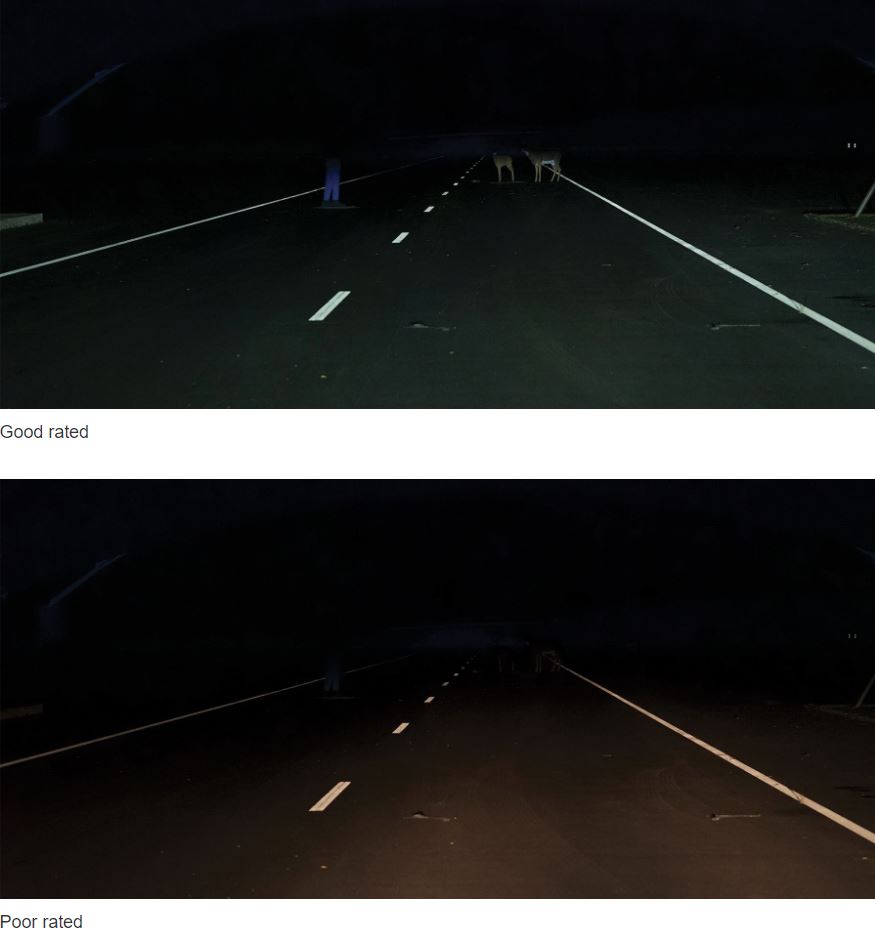Study finds correlation between good headlights and fewer crashes
A new study by the Insurance Institute for Highway Safety suggests that the quality of headlights can reduce night crashes.
Recently, the Insurance Institute for Highway Safety released a report titled “Lighting the Way: IIHS Headlight Ratings Predict Nighttime Crash Rates.” According to the report, the higher a grade a headlight assembly receives, the less likely the vehicle will be involved in a crash at night.

According to the research paper, vehicles with better headlight visibility have lower night crash rates. Among all single-vehicle crash types, good headlights resulted in nearly 20% fewer crashes compared with those with a poor rating. Headlights were rated good, acceptable, marginal or poor.
Good-rated headlights correlated to reduced crash rates by 12% to 29% compared with those with poor ratings in single-vehicle crashes analyzed in the study. A reduction in driver injury crashes was the greatest, with nearly 30% fewer crashes. Good headlights also correlated to a nearly 23% pedestrian crash reduction and 14.5% animal crash reduction.
When the institute evaluates headlights, a system of demerits is applied when testing measurements do not meet specific targets or thresholds. The study found that achieving 10 fewer visibility demerits, the equivalent of one overall rating band, was estimated to reduce the night crash rate by 4.6%.
According to the Insurance Institute for Highway Safety, less than a quarter of vehicle travel occurs between 7 p.m. and 6 a.m. However, nearly half of traffic fatalities occur within those hours.
Although headlights can play a significant factor, other variables contribute significantly as well, including age of the driver, speeding, alcohol use and a full moon versus a new moon.
The study attempted to control as many variables as possible. Only single-vehicle crashes were studied to eliminate additional factors, such as glare and crash risk. Nearly 200 vehicle models with model years 2015-20 were part of the study, totaling 365 distinct headlight systems. As of publication, the exact make, model and year of those vehicles are unknown.
It is unclear if there was a difference in advanced driver assistance systems (e.g., collision avoidance, blind-spot detection, adaptive cruise control, automotive night vision, etc.) between vehicles with good headlights and vehicles with poor headlights. According to an Insurance Institute for Highway Safety spokesperson, researchers attempted to control for the presence of those features when listed as standard equipment. However, those features can be deactivated or added as optional features.
Federal requirements for headlights have remained mostly unchanged since they were established more than 50 years ago. Despite that, both vehicle and part manufacturers have voluntarily upgraded their technologies. The Insurance Institute for Highway Safety began evaluating them in 2015. Since then, the proportion of headlight systems receiving good ratings has increased from 4% of those tested in 2015-16 to 34% in 2020. LL









